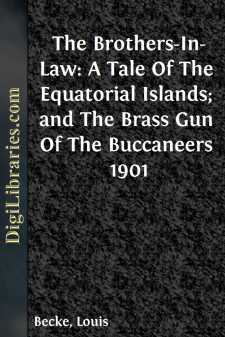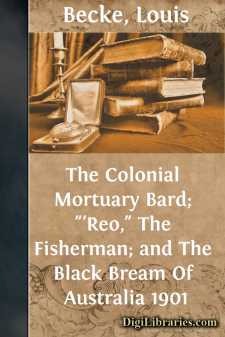Categories
- Antiques & Collectibles 13
- Architecture 36
- Art 48
- Bibles 22
- Biography & Autobiography 813
- Body, Mind & Spirit 142
- Business & Economics 28
- Children's Books 17
- Children's Fiction 14
- Computers 4
- Cooking 94
- Crafts & Hobbies 4
- Drama 346
- Education 46
- Family & Relationships 57
- Fiction 11829
- Games 19
- Gardening 17
- Health & Fitness 34
- History 1377
- House & Home 1
- Humor 147
- Juvenile Fiction 1873
- Juvenile Nonfiction 202
- Language Arts & Disciplines 88
- Law 16
- Literary Collections 686
- Literary Criticism 179
- Mathematics 13
- Medical 41
- Music 40
- Nature 179
- Non-Classifiable 1768
- Performing Arts 7
- Periodicals 1453
- Philosophy 64
- Photography 2
- Poetry 896
- Political Science 203
- Psychology 42
- Reference 154
- Religion 513
- Science 126
- Self-Help 84
- Social Science 81
- Sports & Recreation 34
- Study Aids 3
- Technology & Engineering 59
- Transportation 23
- Travel 463
- True Crime 29
"The Gallant, Good Riou", and Jack Renton 1901
by: Louis Becke
Categories:
Description:
Excerpt
"THE GALLANT, GOOD RIOU"
This is a true story of one of Nelson's captains, he of whom Nelson wrote as "the gallant and good Riou"—high meed of praise gloriously won at Copenhagen—but Riou, eleven years before that day, performed a deed, now almost forgotten, which, for unselfish heroism, ranks among the brightest in our brilliant naval annals, and in the sea story of Australia in particular.
In September, 1789, the Guardian, a forty-gun ship, under the command of Riou, then a lieutenant, left England for the one-year-old penal settlement in New South Wales. The little colony was in sore need of food—almost starving, in fact—and Riou's orders were to make all haste to his destination, calling at the Cape on the way to embark live stock and other supplies. All the ship's guns had been removed to make room for the stores, which included a "plant cabin"—a temporary compartment built on deck for the purpose of conveying to Sydney, in pots of earth, trees and plants selected by Sir Joseph Banks as likely to be useful to the young colony—making her deck "a complete garden," says a newspaper of the time. Friends of the officers stationed in New South Wales sent on board the Guardian great quantities of private goods, and these were stored in the gun-room, which it was thought would be a safer place than the hold, but, as the event proved, it was the most insecure.
The ship arrived at the Cape of Good Hope in November, and there filled her decks with cattle and provisions, then sailed again, her cargo being equal in value to about £70,000. On December 23rd—twelve days after leaving the Cape—what is described as "an island of ice" was seen. Riou gave orders to stand towards it in order to renew, by collecting lumps of ice, the supply of water, the stock of fresh water having run very low in consequence of the quantity consumed by the cattle.
The Public Advertiser of April 30, 1790, describes what now happened. As the ship approached the island, the boats were hoisted out and manned, and several lumps collected. During this time the ship lay to, and on the ice being brought on board she attempted to stand away. Very little apprehension was at this time entertained of her safety, although the enormous bulk of the island occasioned an unfavourable current, and in some measure gave a partial direction to the wind. On a sudden, the base of the island, which projected under water considerably beyond the limits of the visible parts, struck the bow of the ship; she instantly swung round, and her head cleared, but her stern, coming on the shoal, struck repeatedly, and the sea being very heavy, her rudder broke away, and all her works abaft were shivered. The ship in this situation became, in a degree, embayed under the terrific bulk of ice, for its height was twice that of the mainmast of a ship of the line, and the prominent head of the berg was every moment expected to break away and overwhelm the ship. At length, after every practicable exertion, she was got off the shoal, and the ice floated past her....












